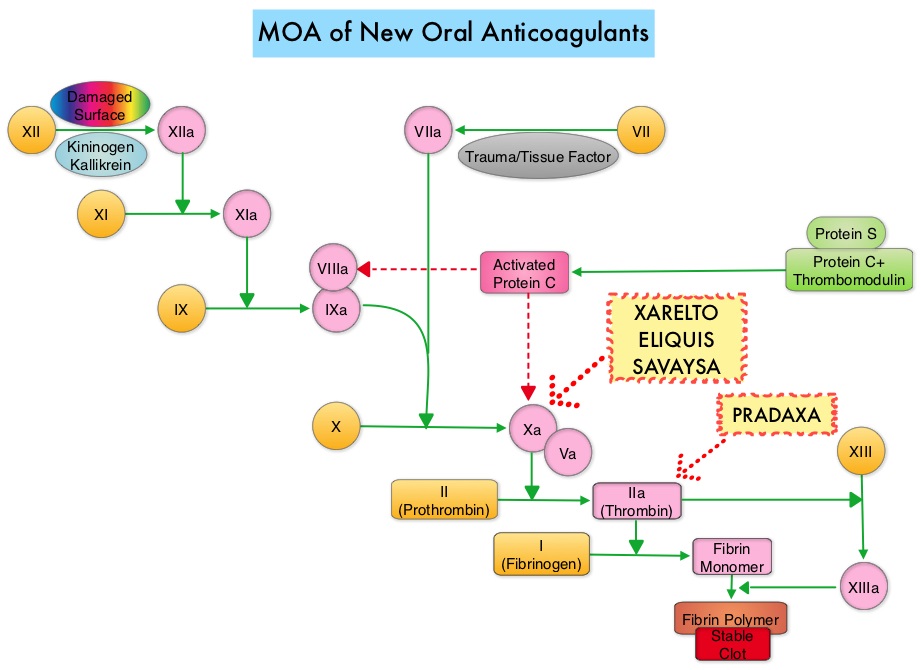SUMMARY: The Center for Disease Control and Prevention (CDC) estimates that approximately 1-2 per 1000 individuals develop Deep Vein Thrombosis/Pulmonary Embolism (PE) each year in the United States, resulting in 60,000-100,000 deaths. Venous ThromboEmbolism (VTE) is the third leading cause of cardiovascular mortality, after myocardial infarction and stroke. With the exception of those with active malignancy, patients with VTE are often treated with Direct Oral Anticoagulant agents such as XARELTO® (Rivaroxaban) over vitamin K antagonists such as Warfarin because, Direct Oral Anticoagulant agents do not require routine laboratory monitoring or dose adjustment, have fewer interactions with food or other drugs and are associated with a lower risk of bleeding complications. Anticoagulation therapy is usually recommended for 3 months following an initial episode VTE in association with a transient risk factor such as surgery. In patients without reversible risk factors however, the risk of recurrent VTE is 10% or more during the first year, if anticoagulation therapy is discontinued. Extended anticoagulation therapy beyond 6 to 12 months even though effective is often not a common practice, for the fear of bleeding complications. Aspirin has been shown to reduce the risk of recurrent VTE when compared with placebo, but recurrence rate with this intervention is still significant at 5.1% per year. 
The authors in this study compared the efficacy and safety of two doses of XARELTO® with Aspirin, in patients with Venous ThromboEmbolism, who had completed 6 to 12 months of anticoagulation therapy, and in whom there was uncertainty regarding the need for continued anticoagulation. In this randomized, double-blind, phase III trial, 3396 (N=3396) patients with Venous ThromboEmbolism were assigned, in a 1:1:1 ratio, to receive either XARELTO® 20 mg, XARELTO® 10 mg or Aspirin 100 mg given once daily. The primary efficacy outcome was symptomatic recurrent fatal or nonfatal Venous ThromboEmbolism, and the principal safety outcome was major bleeding. Secondary endpoints included whether the lower dose of XARELTO® was as effective as the higher dose and whether it was associated with less bleeding.
It was noted that after a median duration of treatment of 351 days, symptomatic recurrent fatal or nonfatal Venous ThromboEmbolism or unexplained death occurred in 1.5% of the patients assigned to XARELTO® 20 mg and 1.2% of the patients assigned to XARELTO® 10 mg compared with 4.4% among the patients assigned to the Aspirin group (P<0.001). Major or clinically relevant non-major bleeding occurred in 3.3%, 2.4%, and 2.0% of the patients, respectively.
It was concluded that among patients with Venous ThromboEmbolism for whom continued anticoagulation is a consideration, after an initial treatment course at usual therapeutic doses, the risk of a recurrent thromboembolic events were significantly lower with XARELTO® given at either a therapeutic dose (20 mg) or a prophylactic dose (10 mg), compared with Aspirin. There was no significant increase in bleeding rates. Rivaroxaban or Aspirin for Extended Treatment of Venous Thromboembolism. Weitz JI, Lensing AW, Prins MH, et al. for the EINSTEIN CHOICE Investigators. N Engl J Med 2017; 376:1211-1222

